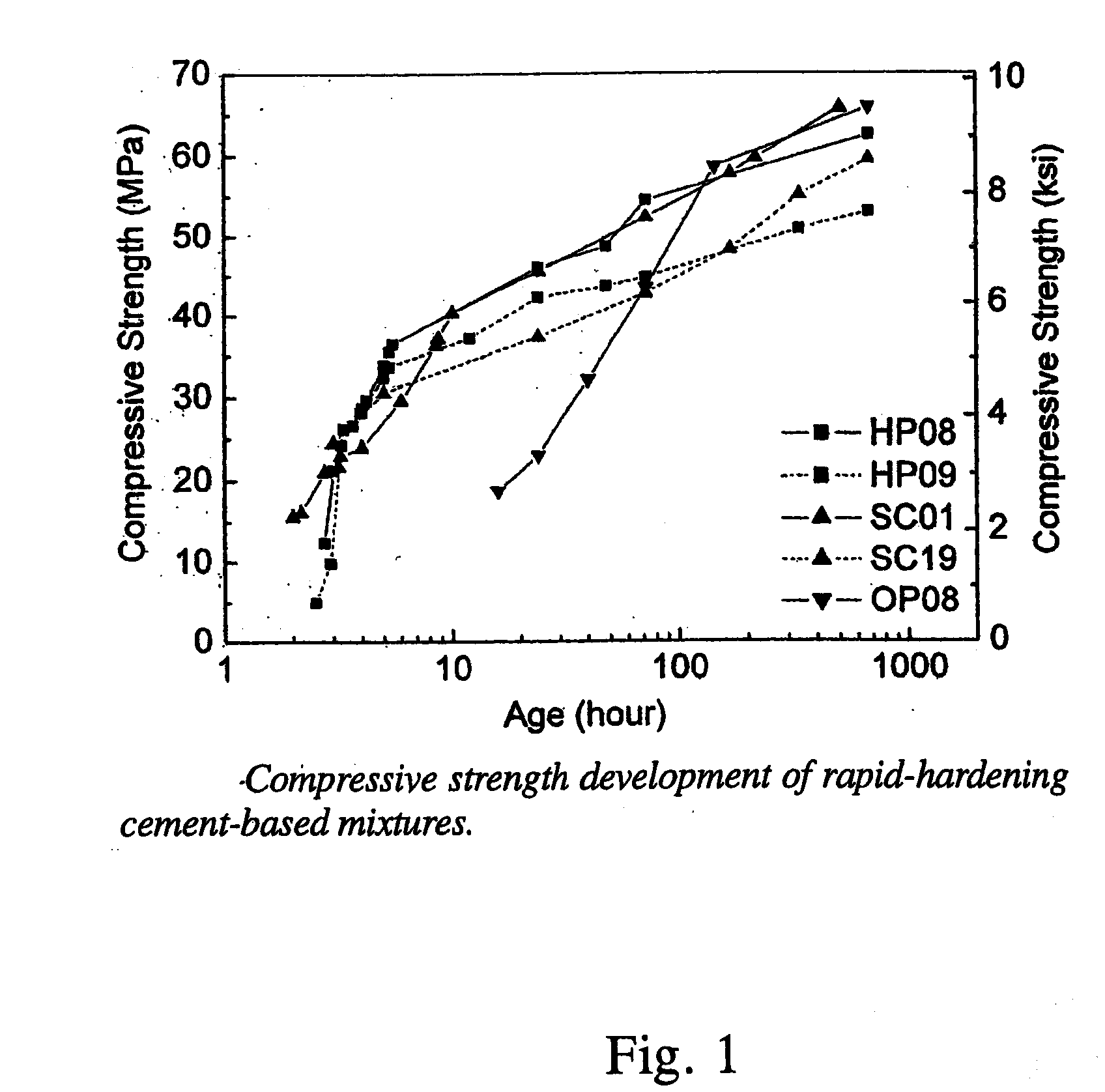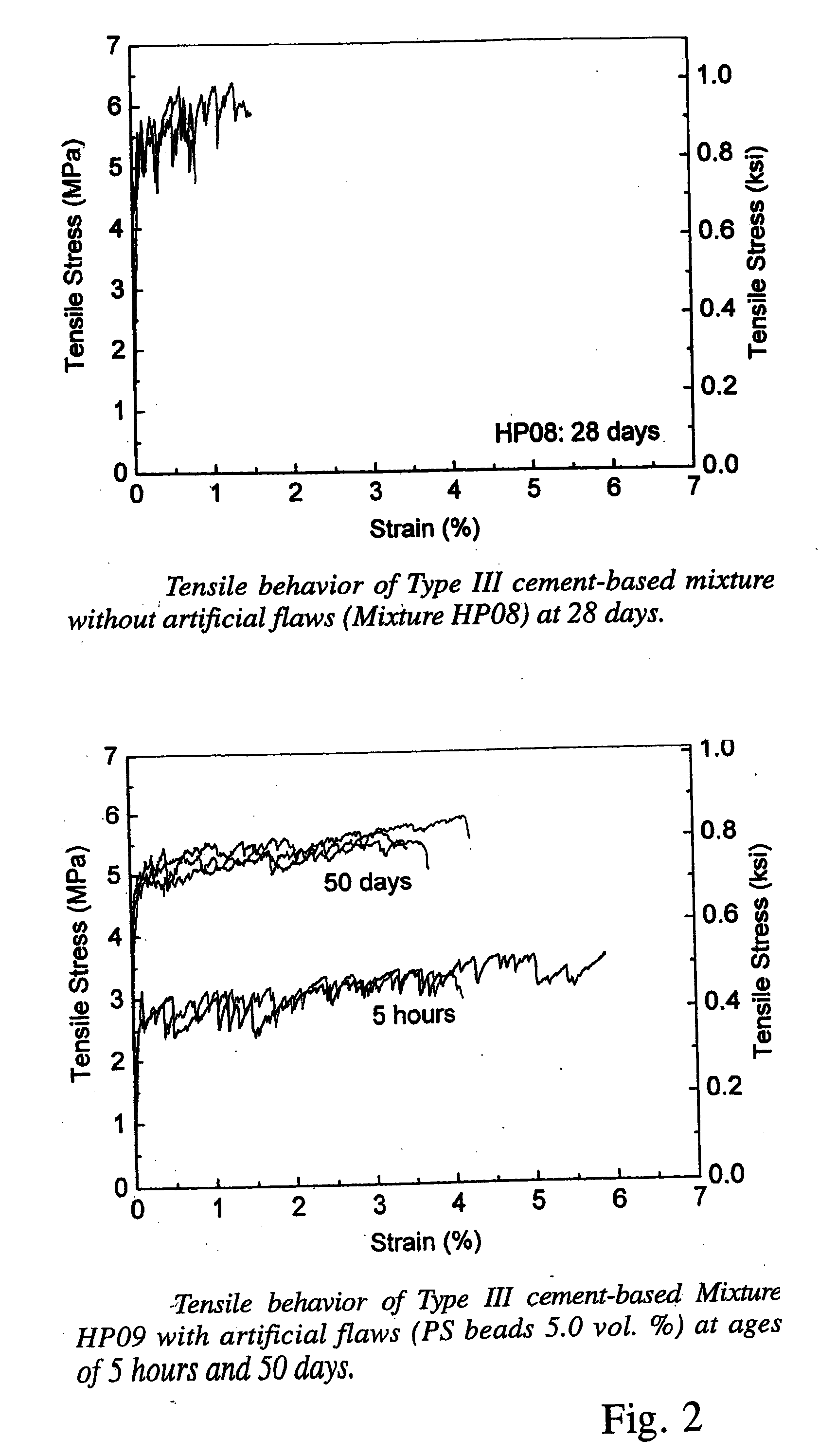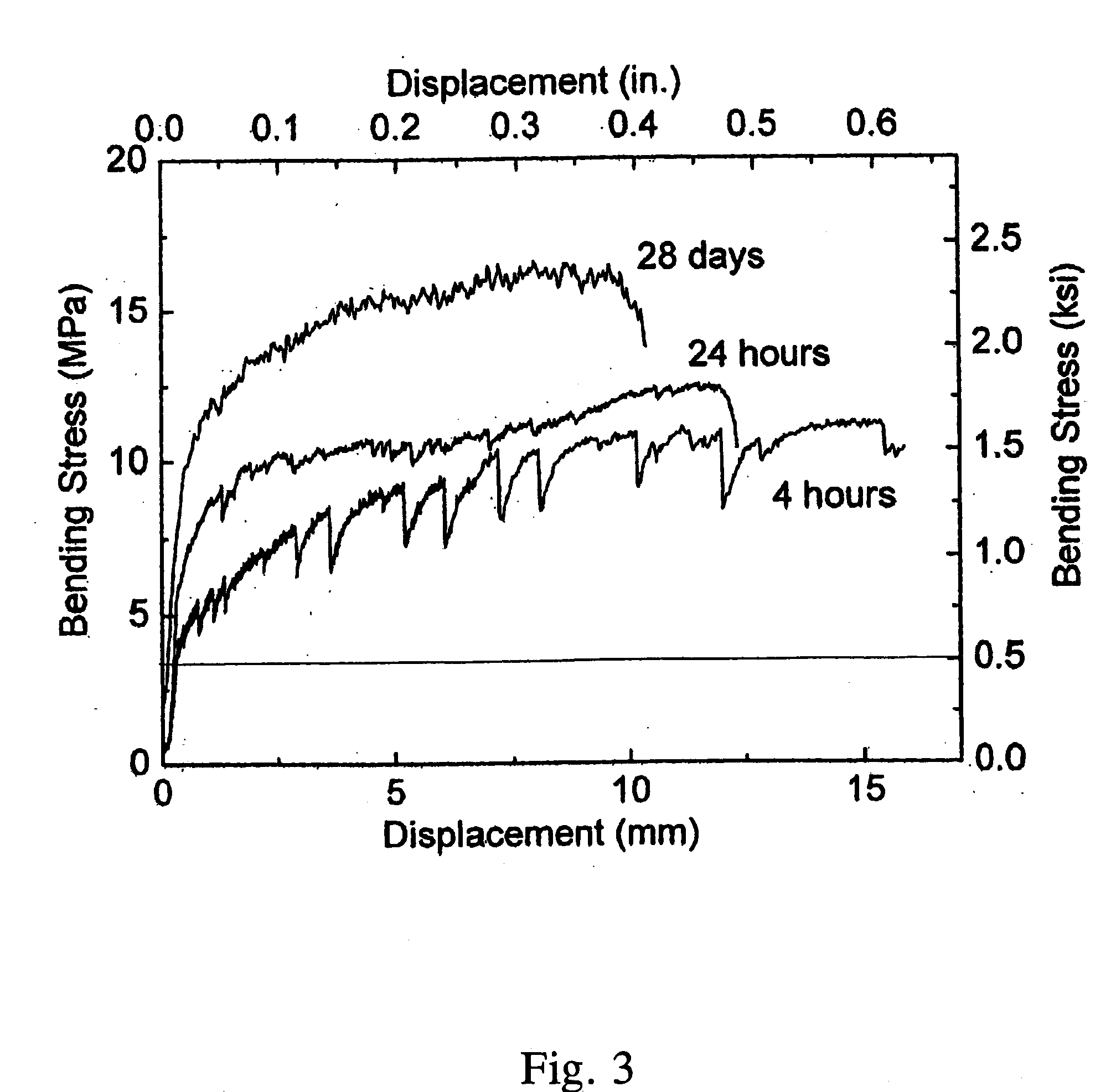High Early Strength Engineered Cementitious Composites
a technology of engineered cement and composites, applied in the direction of climate sustainability, solid waste management, sustainable waste treatment, etc., can solve the problems of up to half of all concrete repairs failing, lack of durability, and lack of durability of traditional concrete repairs, and achieve significant tensile strain capacity, high early strength, and the effect of fundamental improvement of the durability of the repair using these materials
- Summary
- Abstract
- Description
- Claims
- Application Information
AI Technical Summary
Benefits of technology
Problems solved by technology
Method used
Image
Examples
Embodiment Construction
[0016]Hydraulic calcium silicates comprise hydraulic cements known as portland cements. Portland cement is a finely-ground powder produced by grinding Portland cement clinker (more than 90%), a maximum of about 5% gypsum which controls the set time, and up to 5% minor constituents (as allowed by various standards). ASTM C 150, Standard Specification for Portland Cement, defines Type I cements as general purpose ordinary portland cements (OPC) suitable for all uses where the special properties of other types are not required. Type III cements are chemically and physically similar to Type I cements except they are ground finer to produce higher early strengths. Rapid hardening cements are composed primarily with calcium sulfoaluminate and have the ability to harden within 1 hour.
[0017]Chemical admixtures may contain (a) dispersants and (b) accelerators. Chemical dispersant admixtures assist fiber dispersion and control rheology at low water to binder ratio, which is typical for achiev...
PUM
| Property | Measurement | Unit |
|---|---|---|
| tensile strain | aaaaa | aaaaa |
| length | aaaaa | aaaaa |
| length | aaaaa | aaaaa |
Abstract
Description
Claims
Application Information
 Login to View More
Login to View More - R&D
- Intellectual Property
- Life Sciences
- Materials
- Tech Scout
- Unparalleled Data Quality
- Higher Quality Content
- 60% Fewer Hallucinations
Browse by: Latest US Patents, China's latest patents, Technical Efficacy Thesaurus, Application Domain, Technology Topic, Popular Technical Reports.
© 2025 PatSnap. All rights reserved.Legal|Privacy policy|Modern Slavery Act Transparency Statement|Sitemap|About US| Contact US: help@patsnap.com



